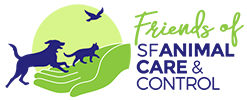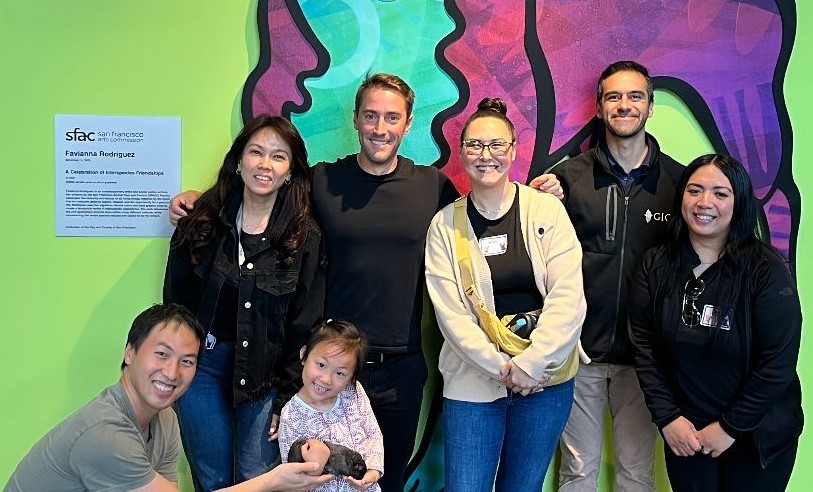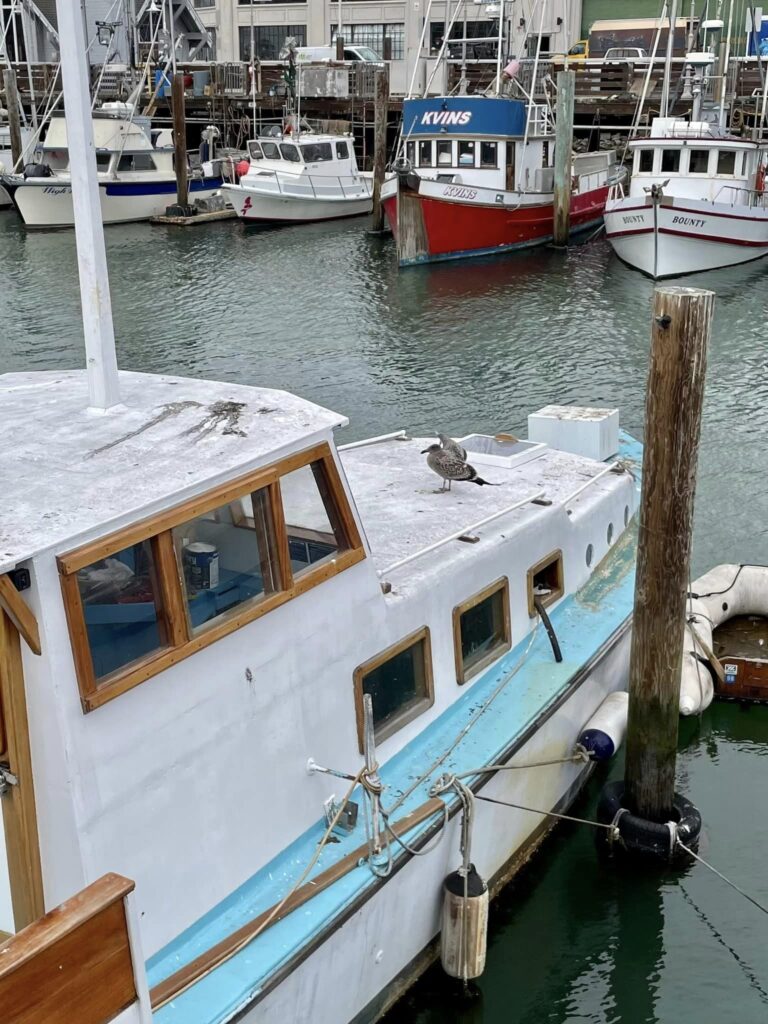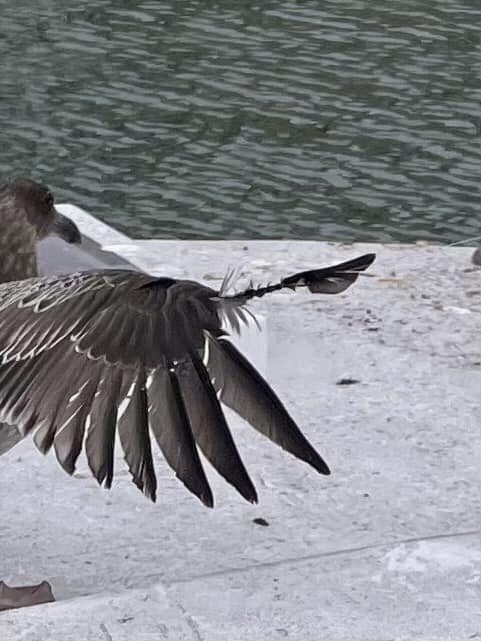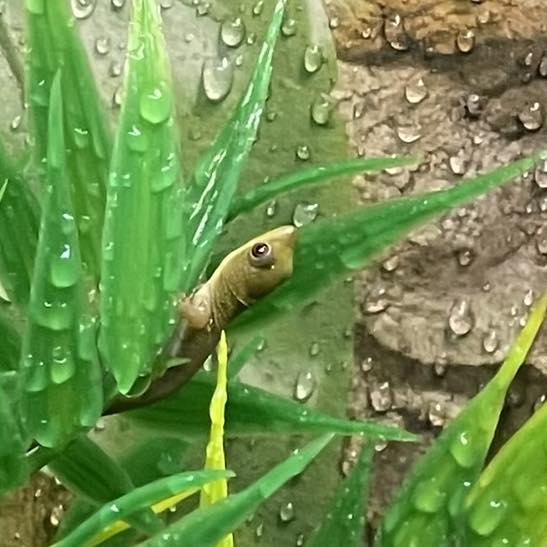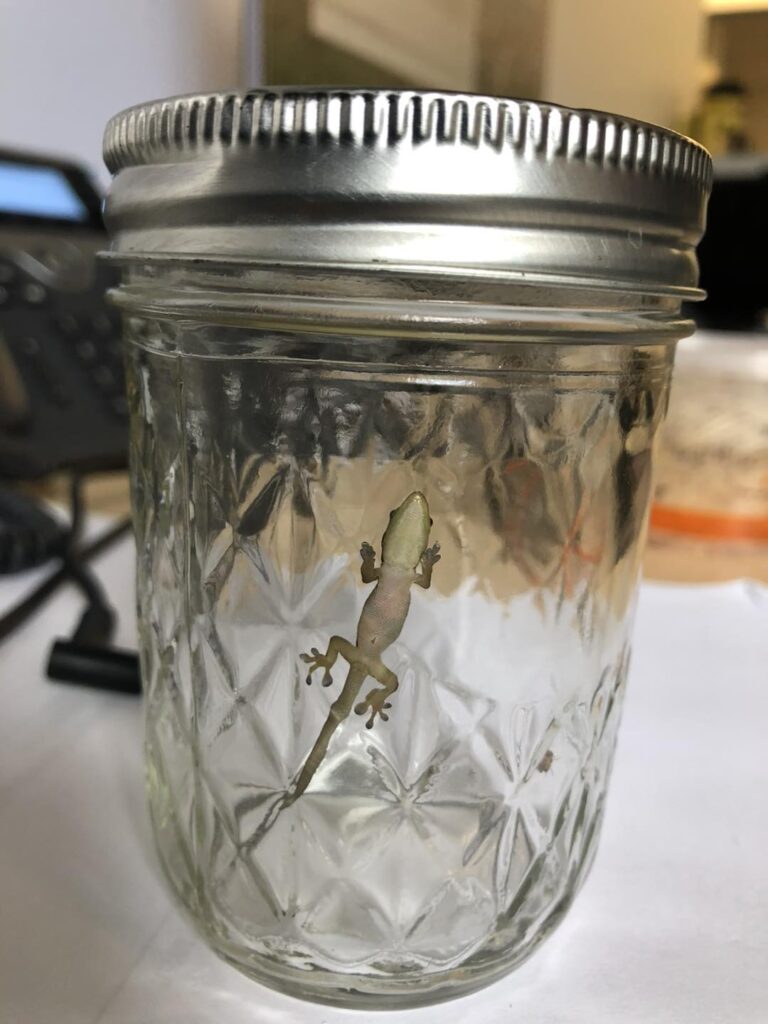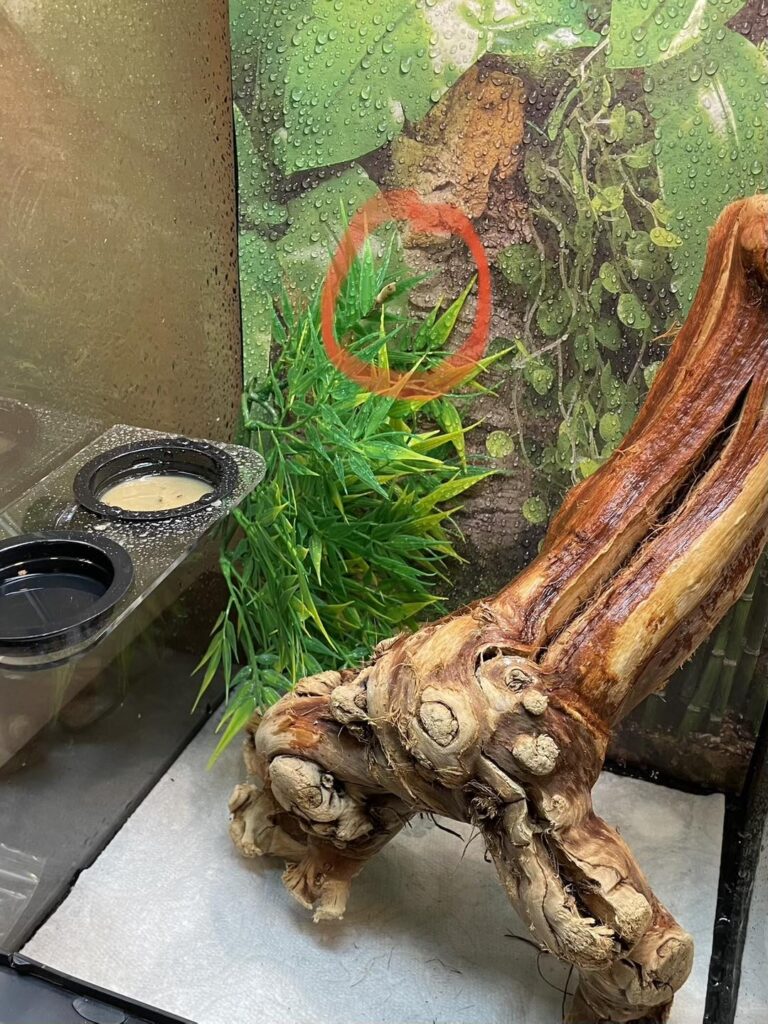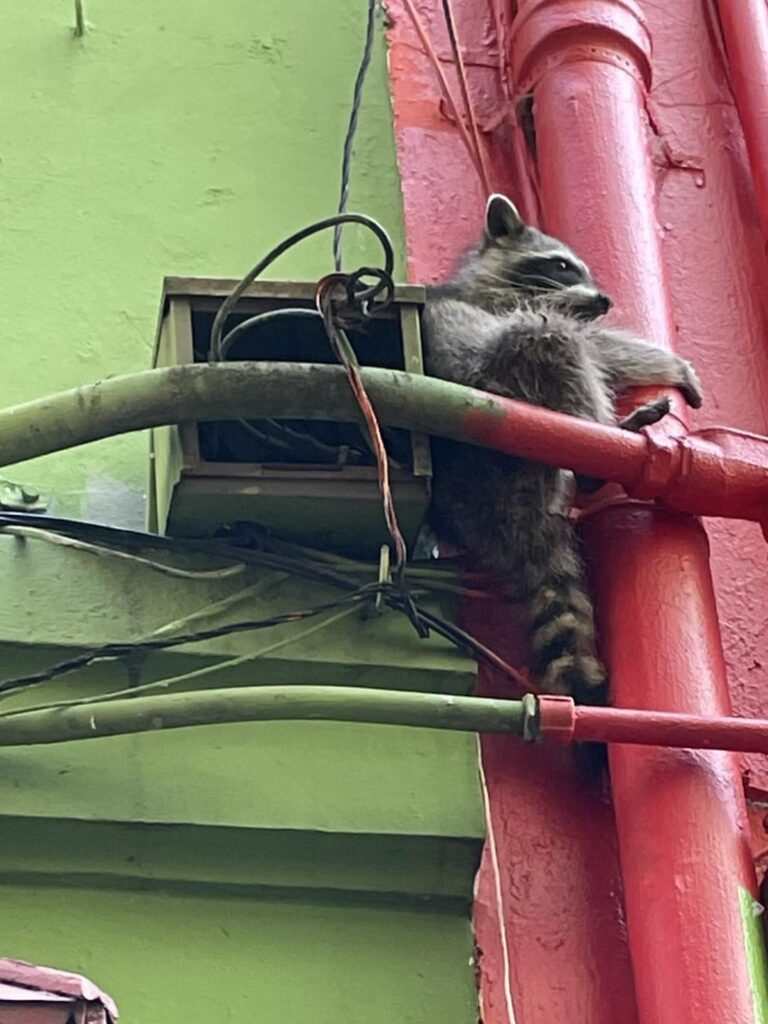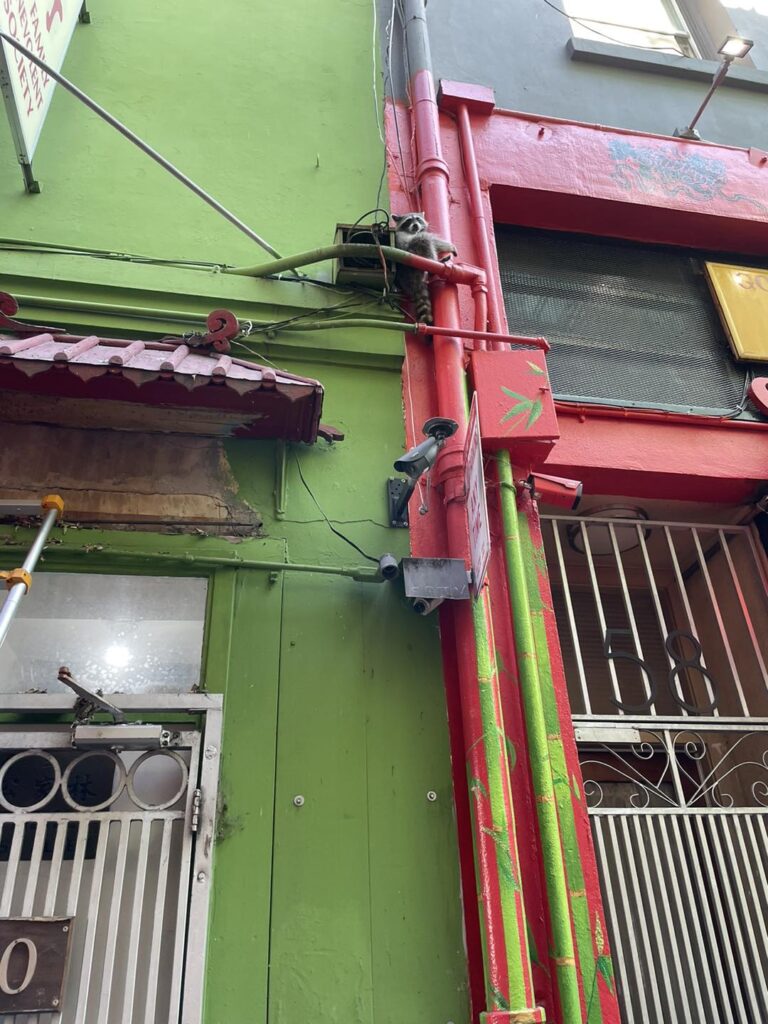Thank you GIC Real Estate Inc. for spending part of their day with us to help our animals. They baked treats, made dog toys, and bagged food for the monthly Full Belly Bus pet food pantries. Our animals loved the treats AND attention!
November 10, 2023 – gull entangled in fishing line
Officer Mullen reports…
I was working dispatch when we got a call from a concerned resident who saw a young gull on a boat that appeared to be caught on something, as the wing was sticking out in a strange way. Officer Quirke was in the area and was sent to check on the bird. When he arrived he soon discovered that the bird was entangled in fishing line that was wrapped around a nearby pole. After gaining permission from the Harbor Master and owner of the boat, Officer Quirke went on board to get a closer look and rescue the bird from the line. Officer Quirke gently laid a towel over the bird to both aid in restraint and calm the gull. He was able to use a knife to gently cut away the fishing line. The line had wrapped around two large feathers and with a few cuts, the line fell off and the bird was no longer entangled. Officer Quirke still had control of the gull and gave the bird a thorough examination. Thankfully the gull did not appear to have any injuries and was able to be released on scene.
There are over 50 different species of gulls and they are the only seabird to inhabit all seven continents. They are one of the only seabirds that can walk as easily on land as they paddle in the water. Gulls are extremely intelligent and inquisitive, which often leads to them finding themselves in some troublesome situations. This along with improper discarding of fishing line creates a dangerous situation for many shorebirds. Thankfully many piers and harbors along the California Coastline have monofilament recycling bins for fishermen to utilize. San Francisco has a program that collects the recycled fishing line and then melts it down to create artificial reefs that are used for freshwater fish living under piers.
If you see a bird or any animal tangled in fishing line or who appears to be in distress, please call our dispatch at 415-554-9400. If you know a fisherman (or woman) please remind them to properly dispose of and recycle their monofilament fishing line. Thank you for helping us keep our shorebirds happy and healthy during their stay in San Francisco.
October 2023
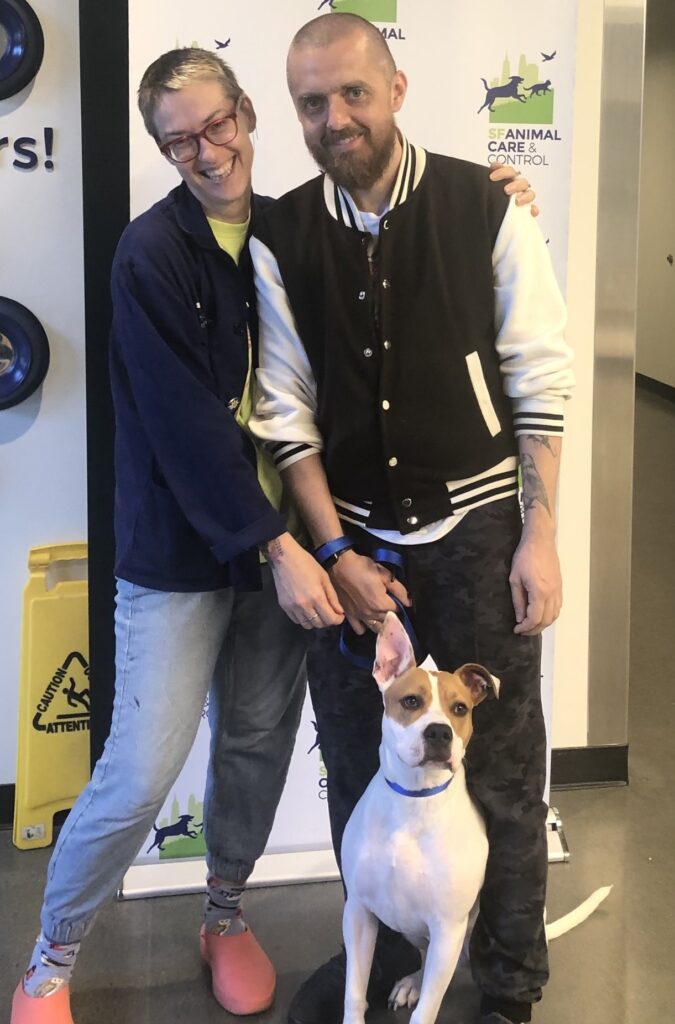
Sweet Cora has gone home! She’d been waiting patiently since early August. We’re going to miss her, but we’re thrilled she found her family!
Adoption update! “Hi – It has been 7 months since we were lucky enough to get Poppy (aka Priscilla). I wanted to let you and your team know she is the BEST dog and brings us so much joy and love.
She went through training and knows all the basics plus some fun stuff and walks on and off leash like a champ. She loves to hike off leash, play with the big jolly ball in the back yard, sleep on the bed and most of all get love and snuggles.
We love her through and through and can’t imagine life without her.”

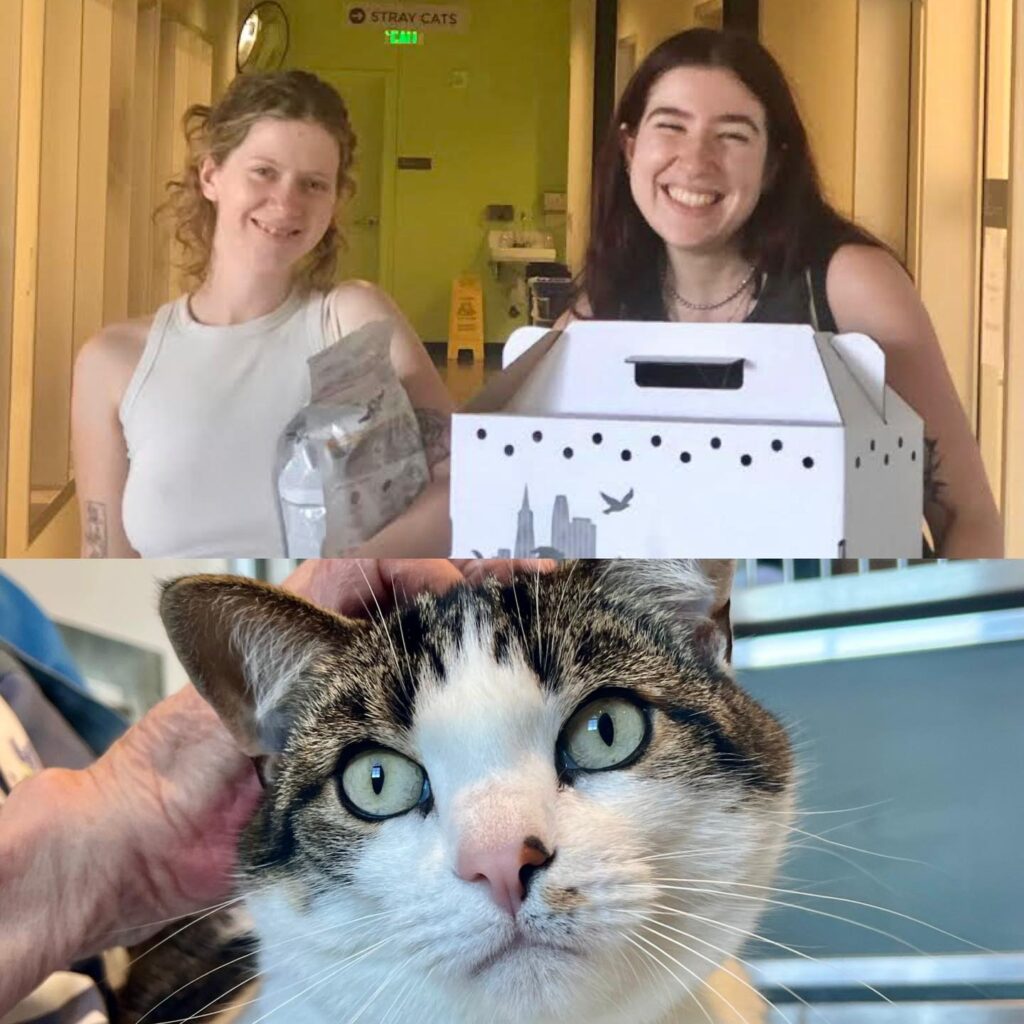
Chonky lovebug Bentley has gone home.
Fluffy boy Angel has gone home to live with some new piggy siblings!
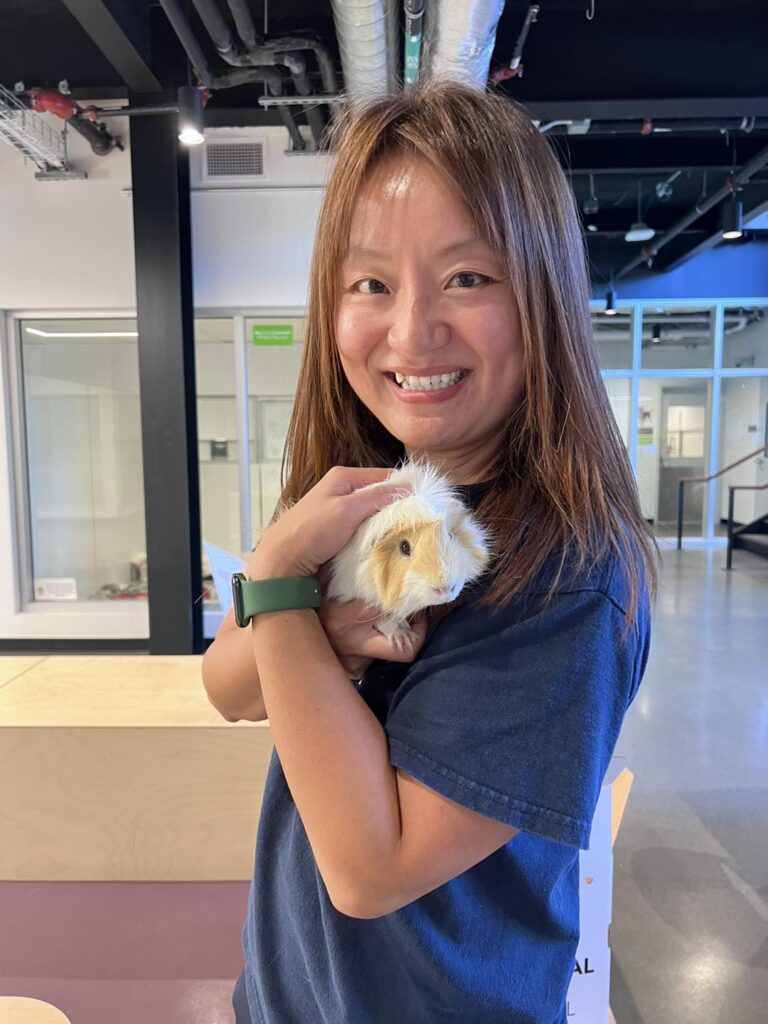
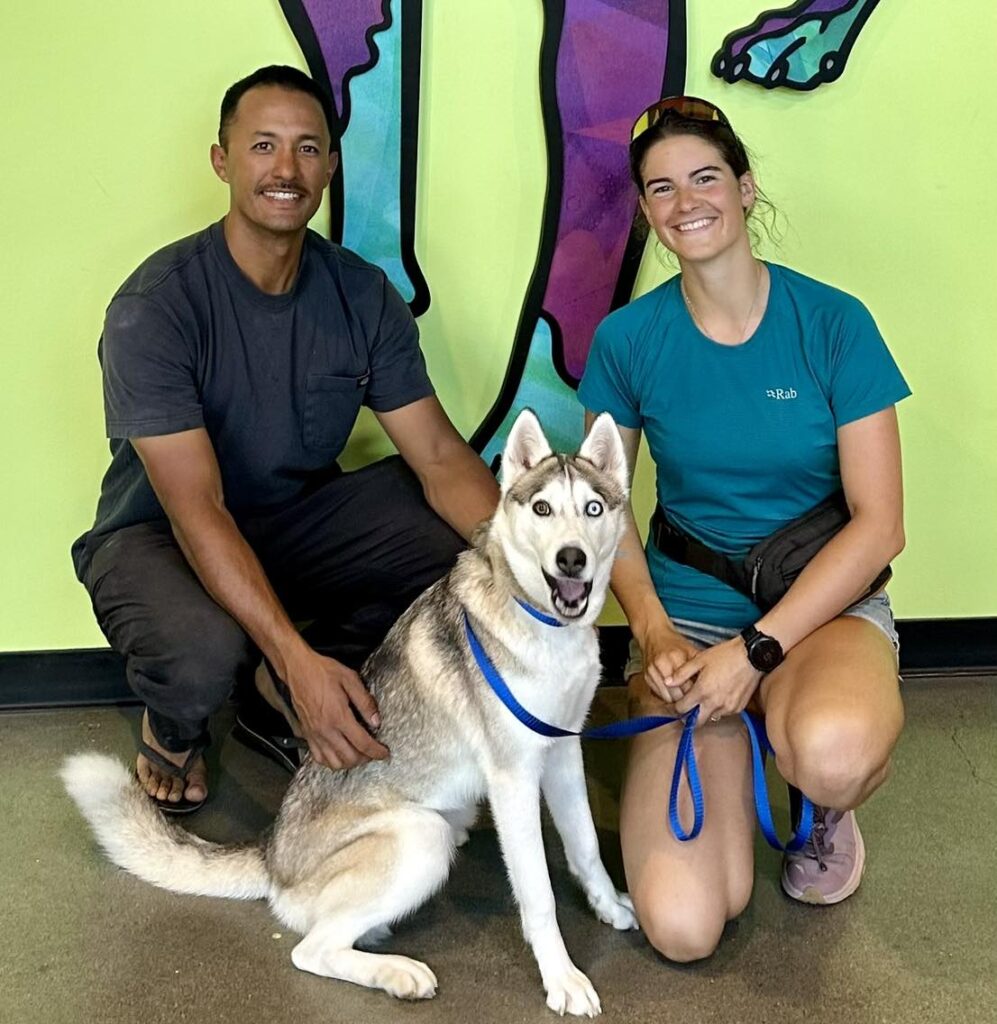
Husky beauty Fairy Dust.
Guthrie has gone home.
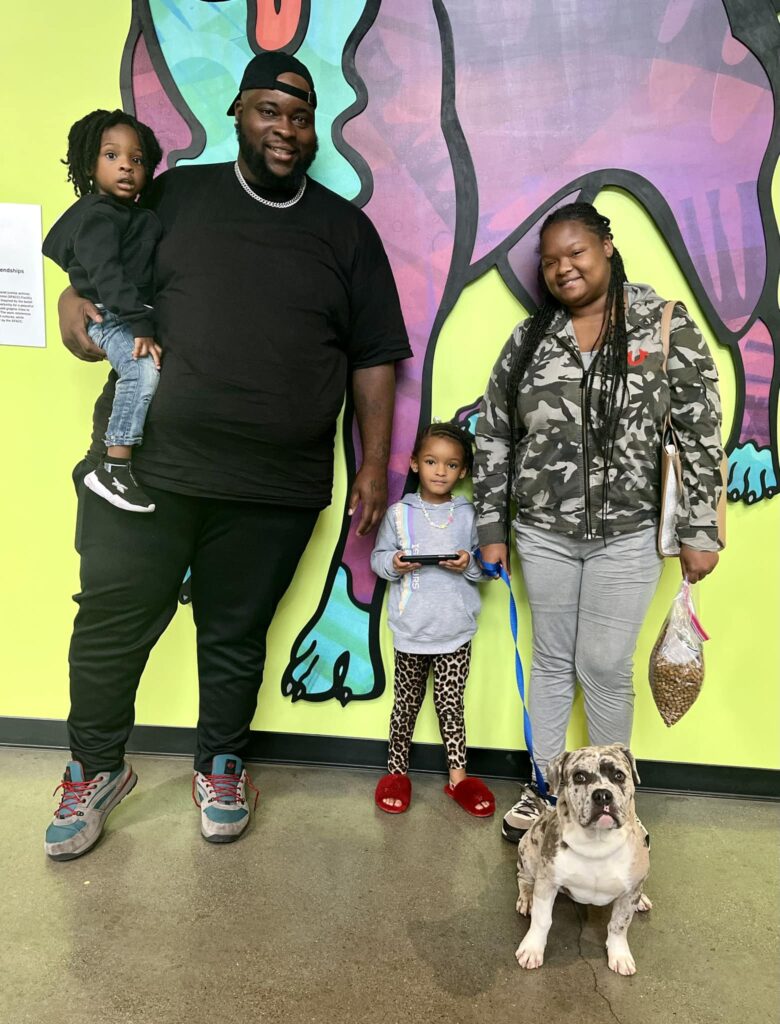
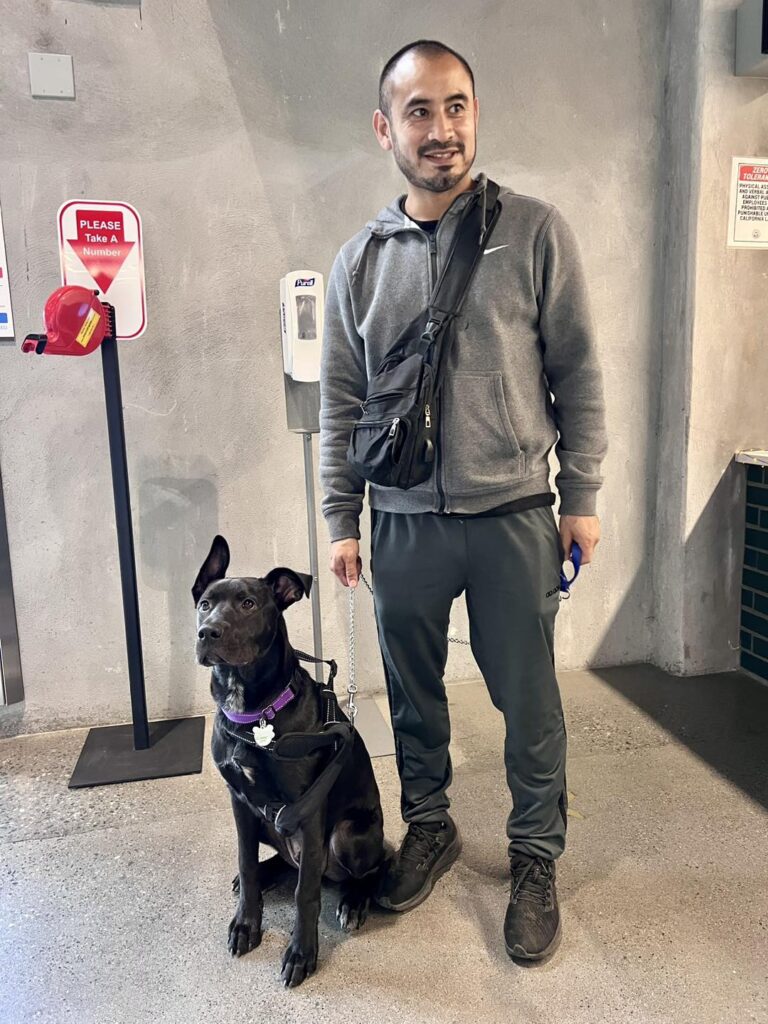
Batito! He was adopted only last month and we swear he’s gotten even bigger! He looks like a grown up, very handsome dog.
Sweet senior Teacup Chloe has been adopted by a couple who recently lost their pittie. And we have a couple of updates. She’s settling in nicely!
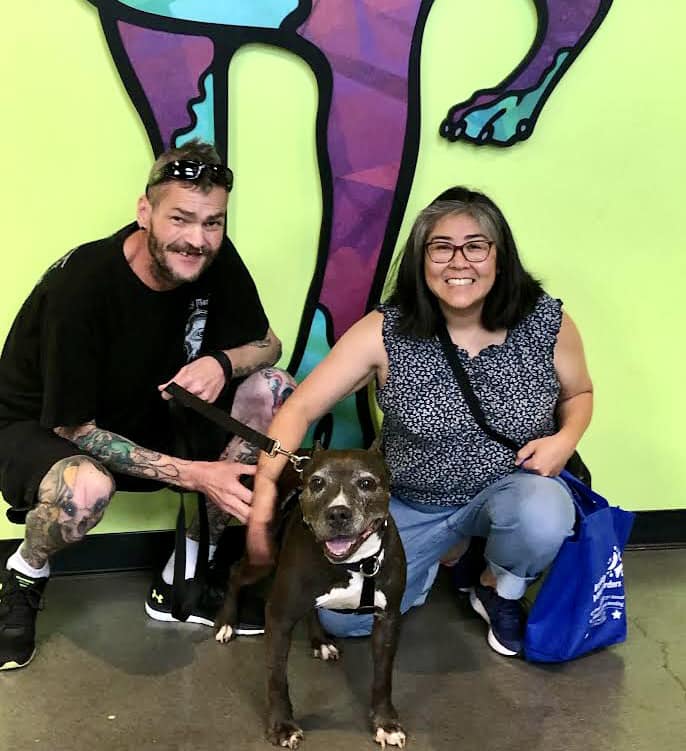

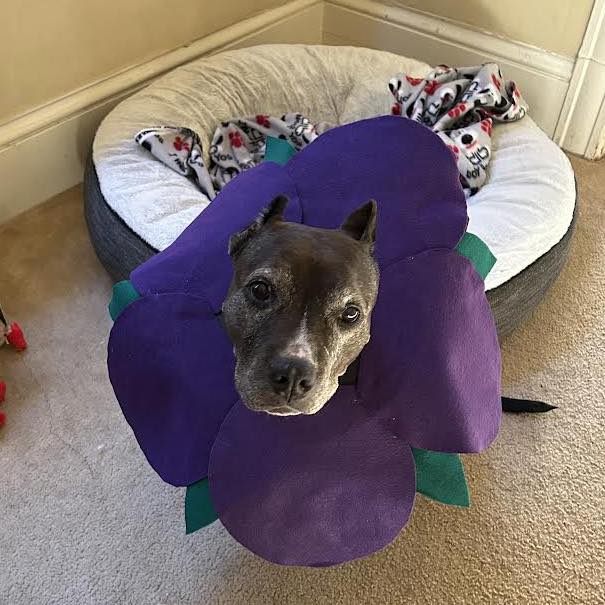
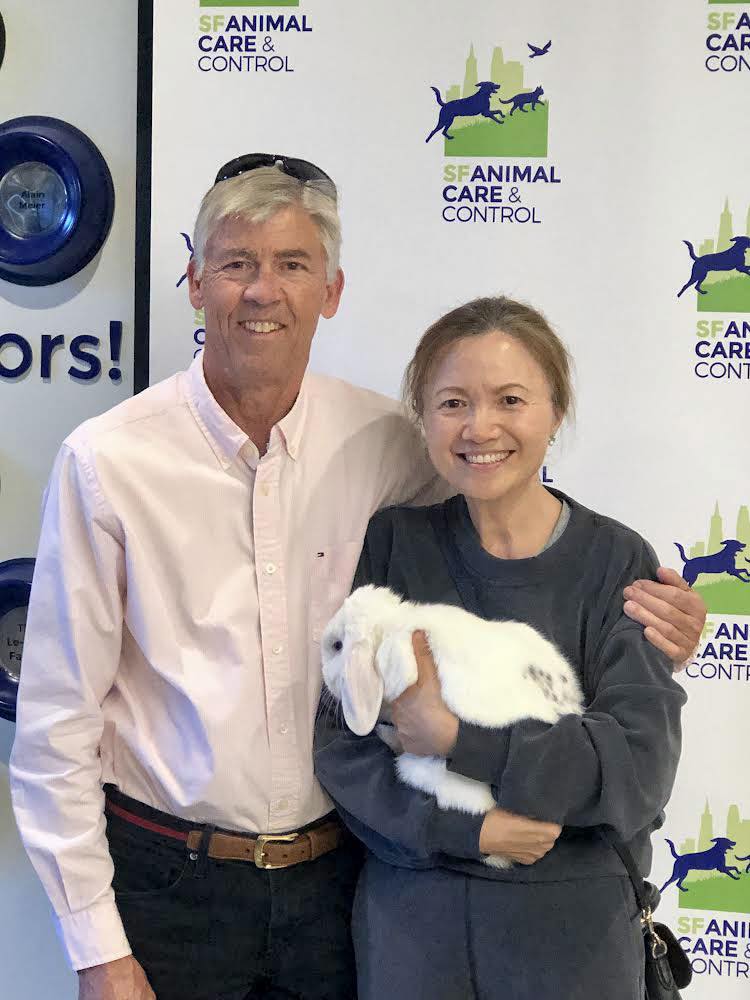
Lop eared sweetie Lucas has been adopted.
Kitten Harvey Dent was adopted by his fosters. Yay for foster wins!
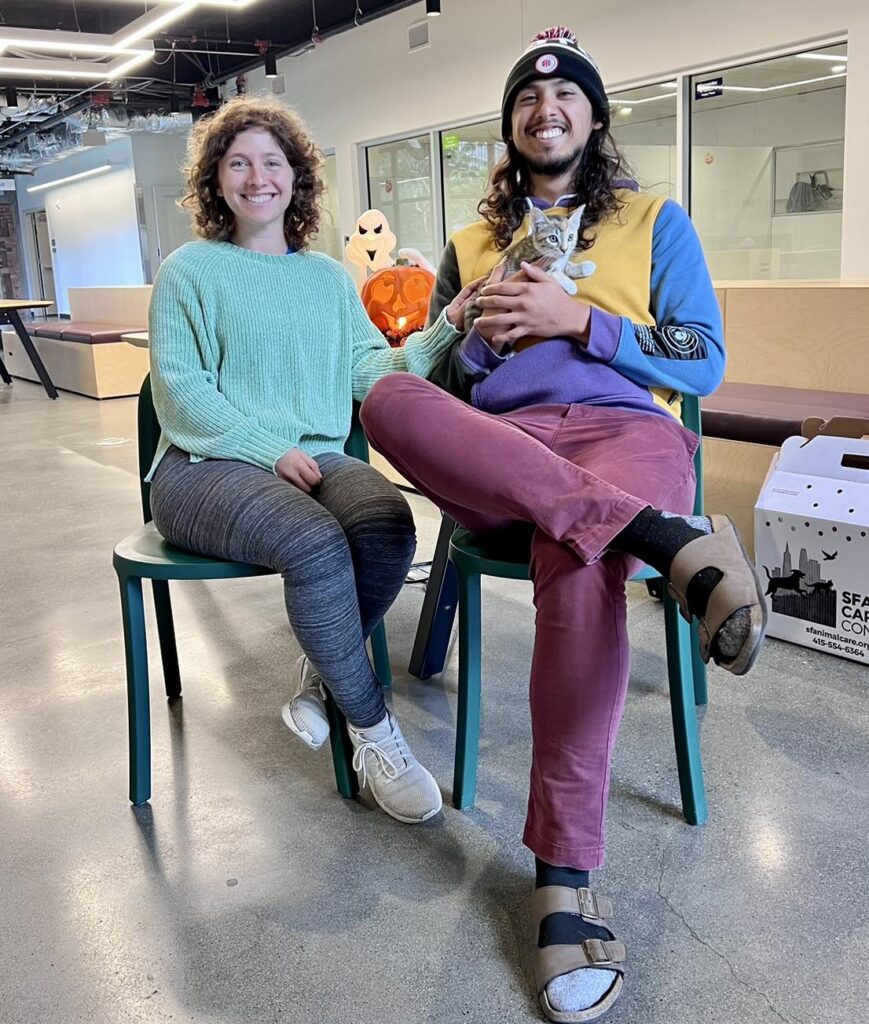
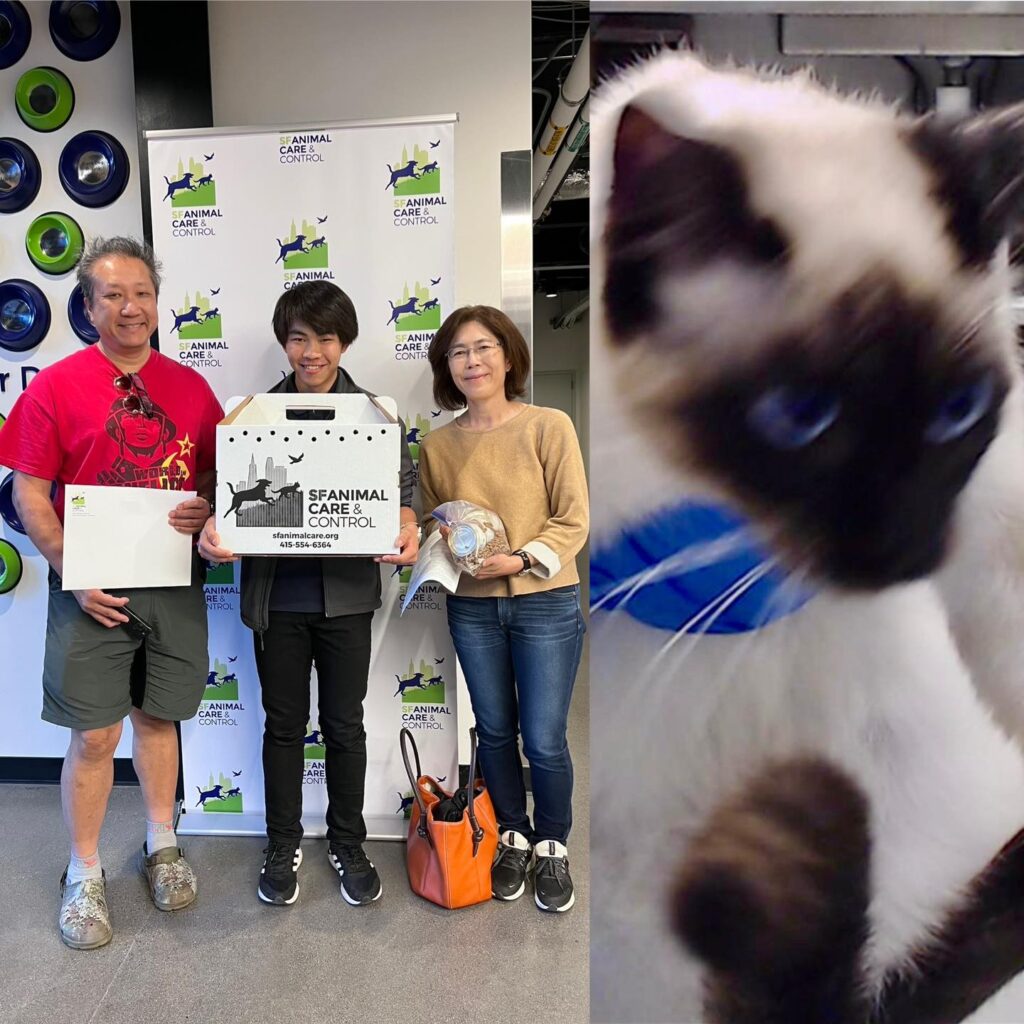
Teen kitten Otter has gone home. He was adopted before we even got a good photo of him!
Wee bun Casala has gone home. She was adopted from us earlier this year, but was returned when her adopter became too ill to take care of her. Hoppy tails!
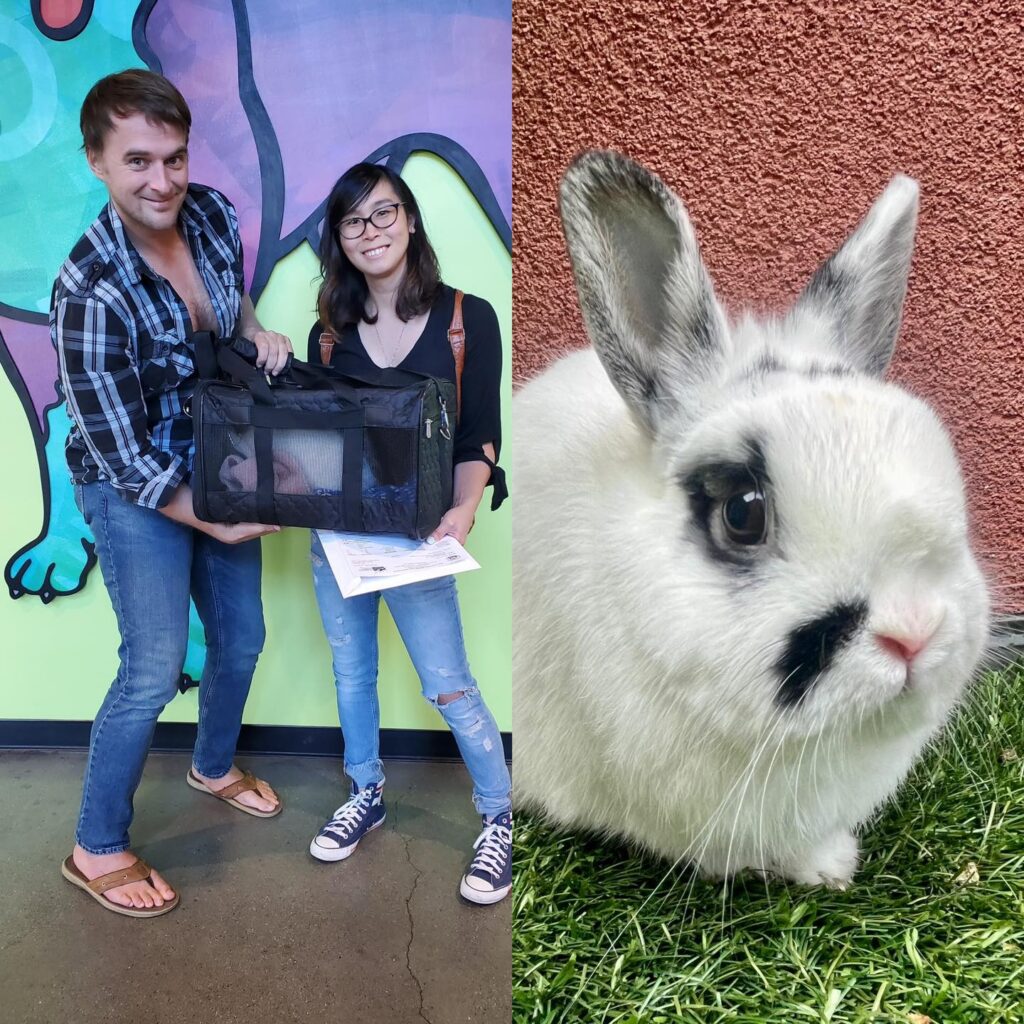

Yay fluffy Chef Carmy! The floofiest bun got a fabulous forever home with a bunny sibling.
Bonded kitten pair Eggplant and Beet have gone home together and they have even more delicious names: Zatar and Lebna!
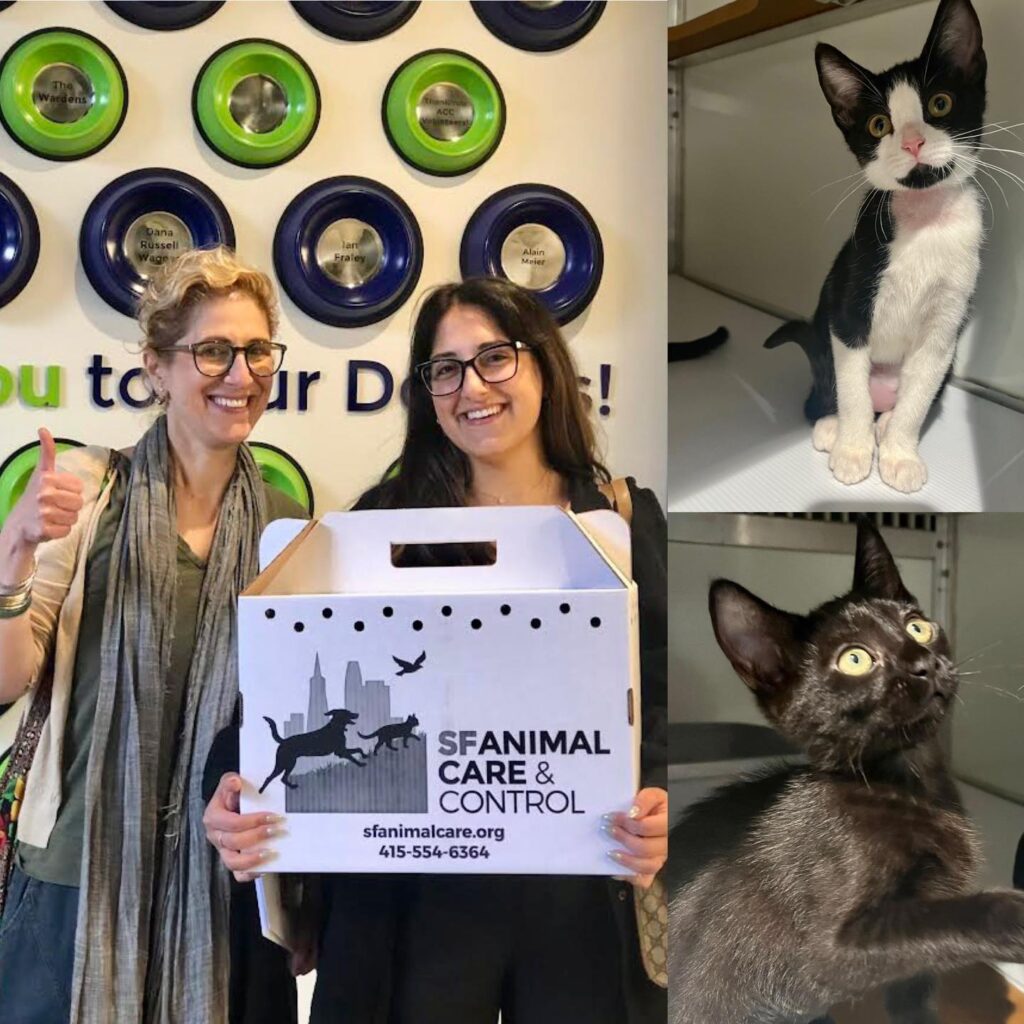
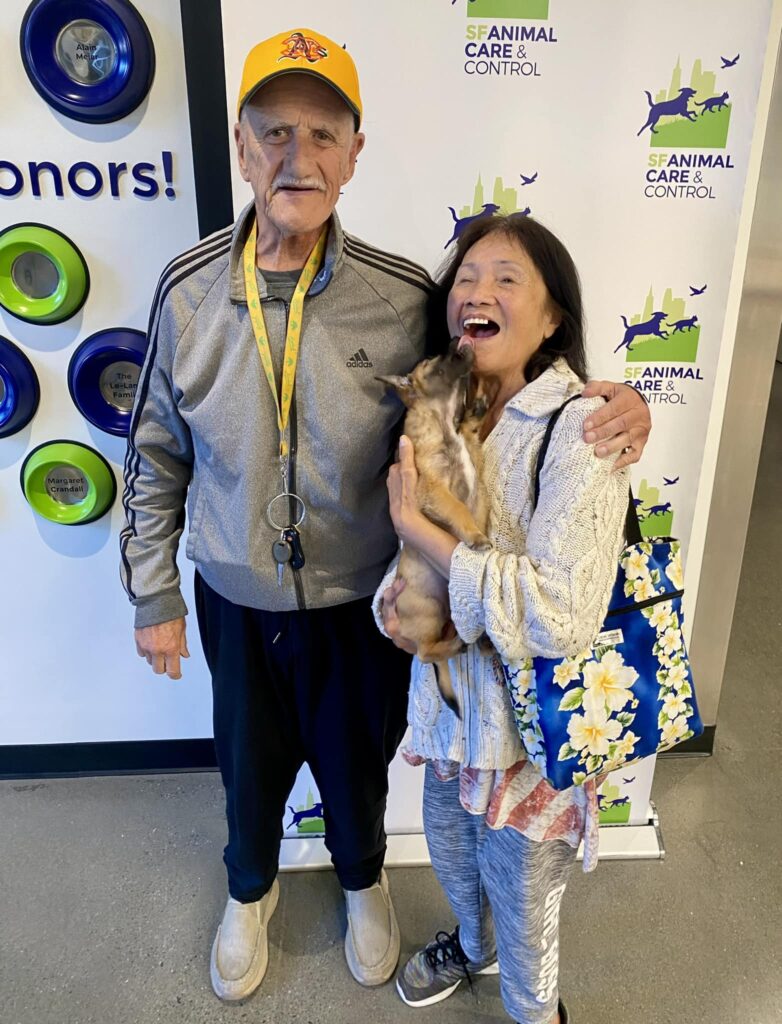
Teeny puppy Bao Bao has gone home! Looks like lots of kisses are in store for his new family.
Teens Wally and Niles went home together with an adopter who recently lost her senior cat. We love it when pairs stay together!
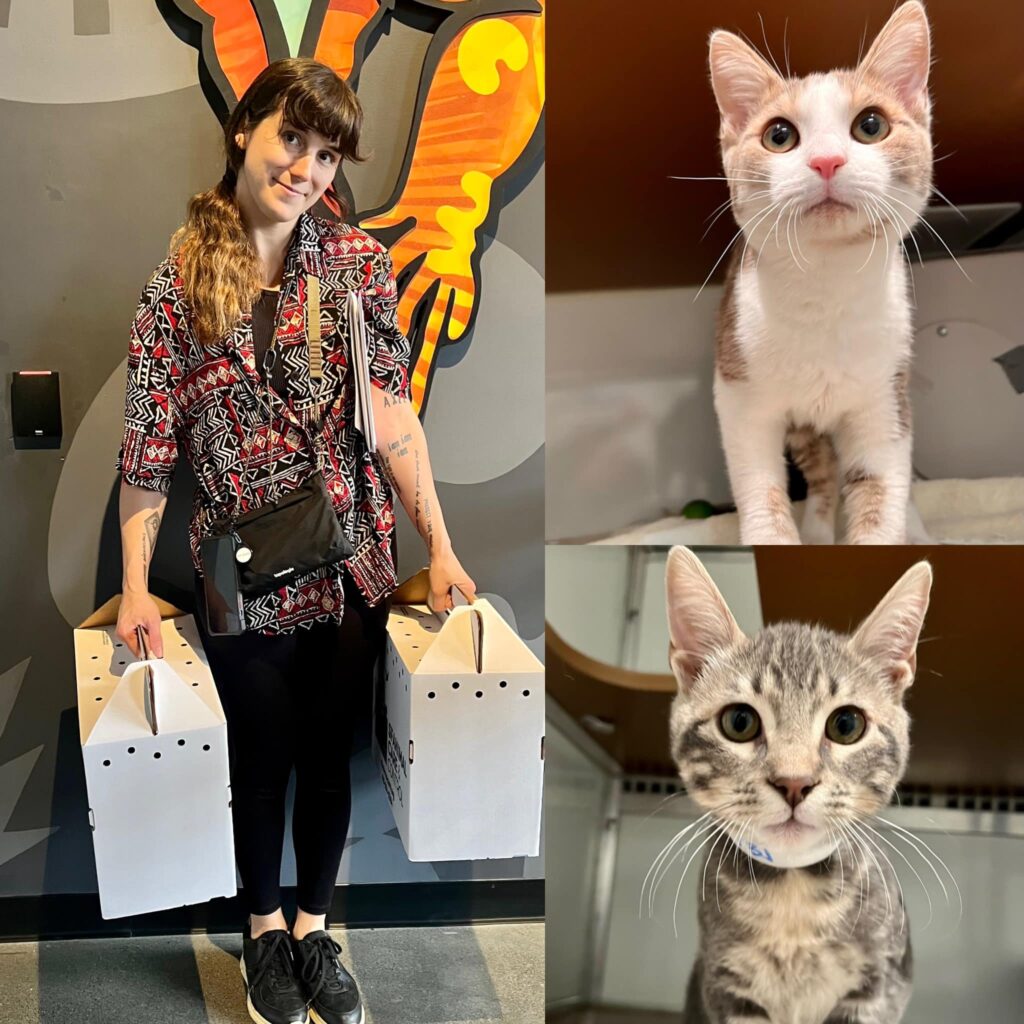

Senior sweetie Hollie has gone home. Happy tails!
Sweet boy Gus has gone home.
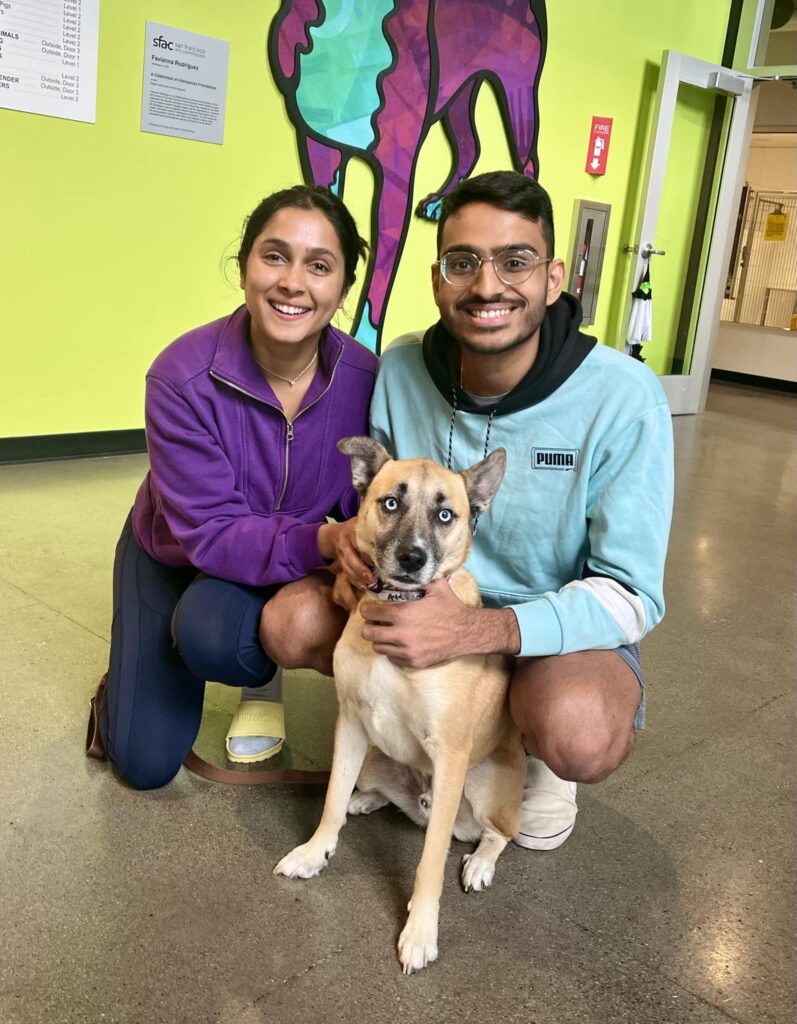

Dally
Ella!
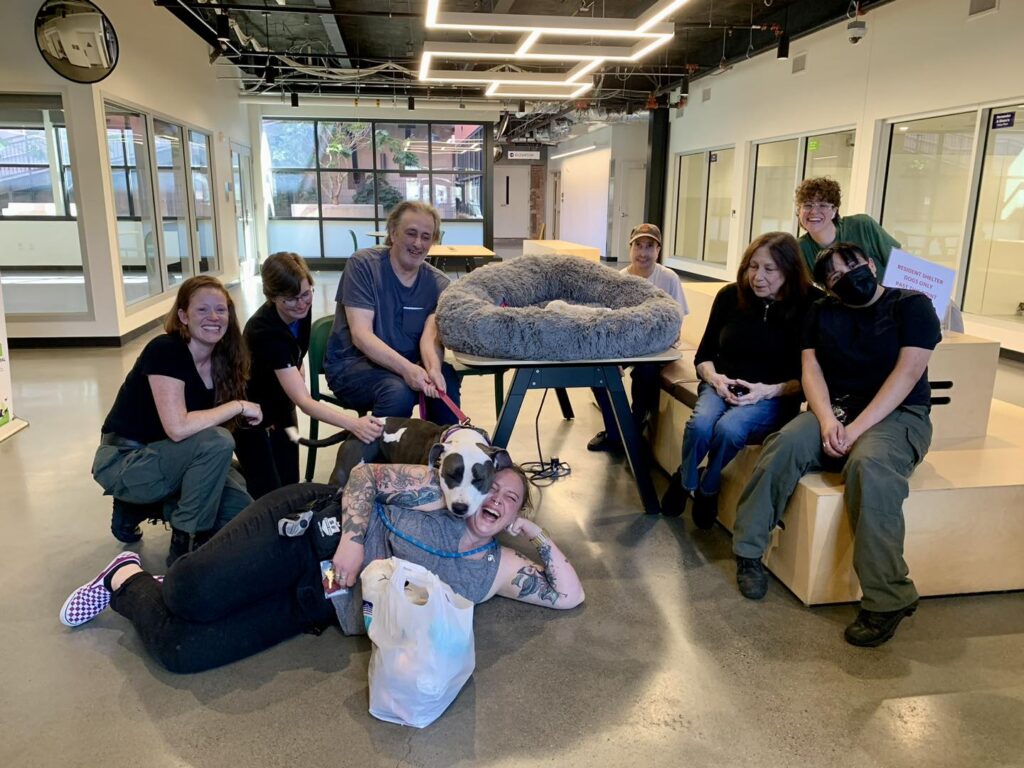
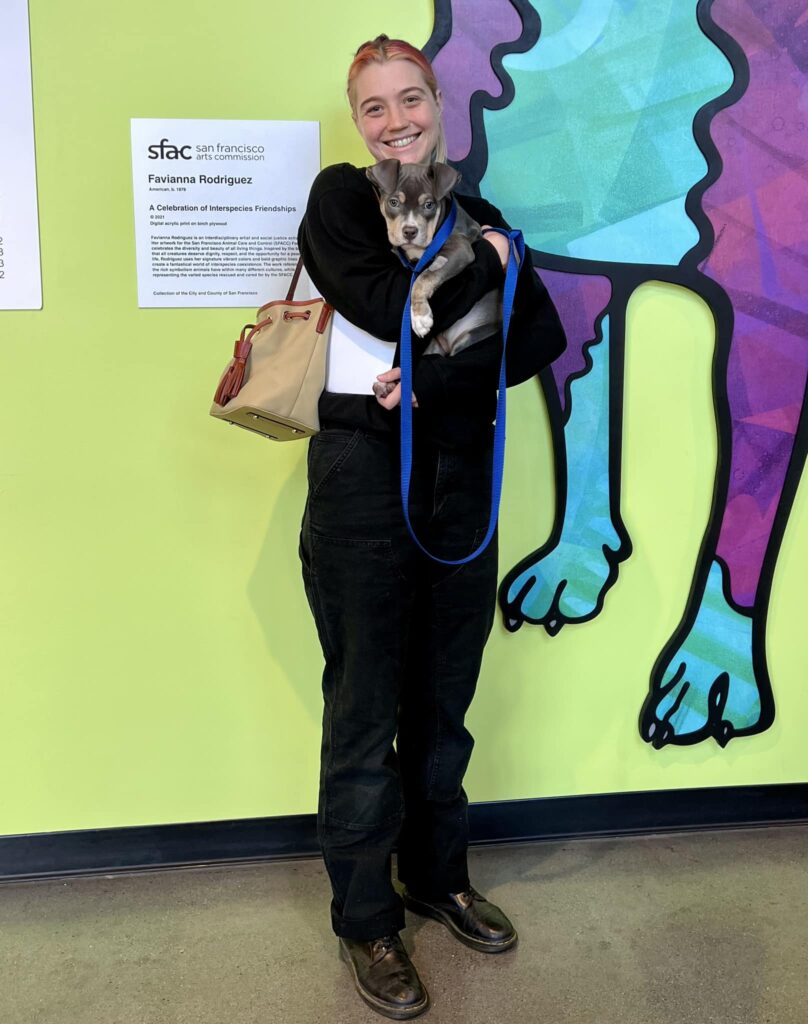
Gumdrop
Huckleberry
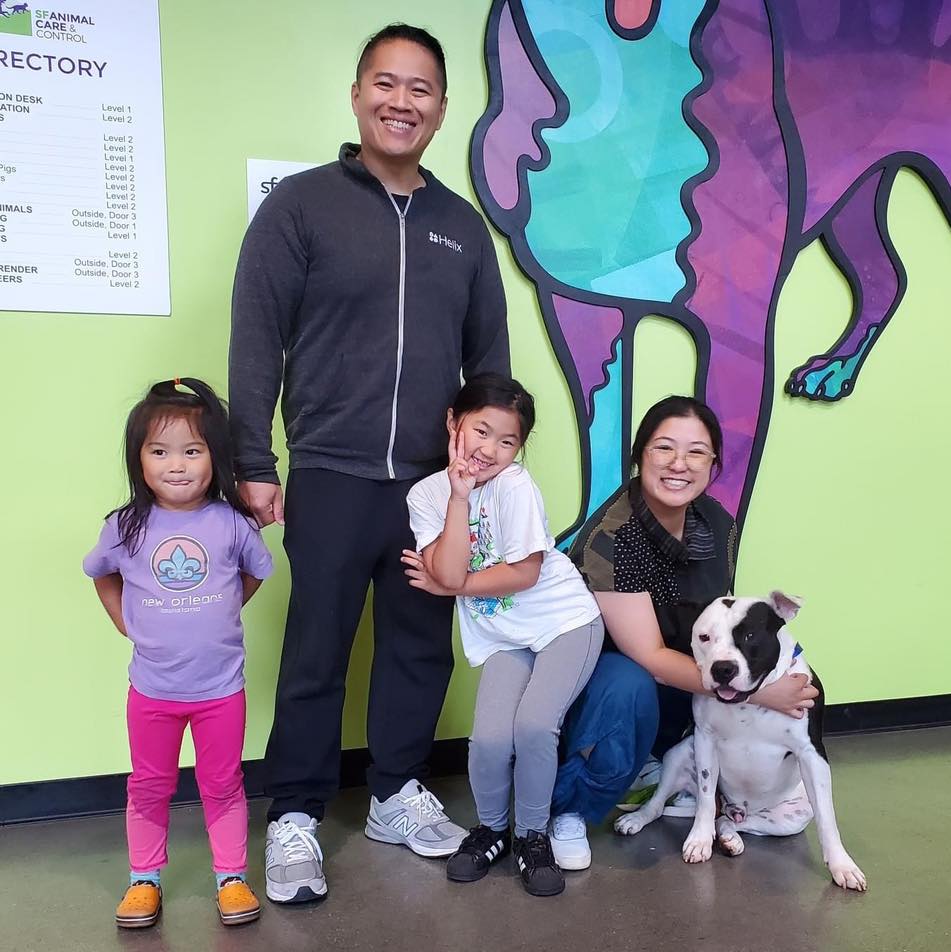
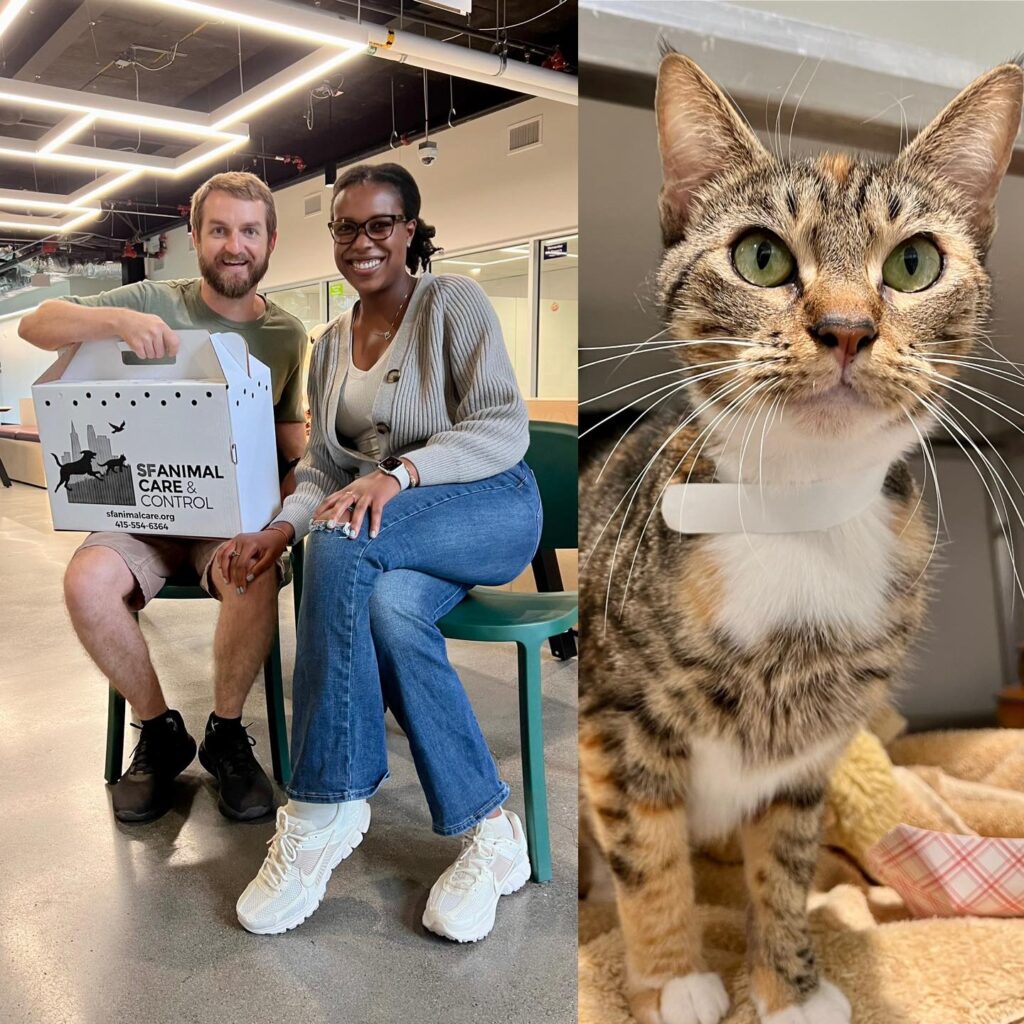
Queen
Sam is his family’s first cat. Congrats!
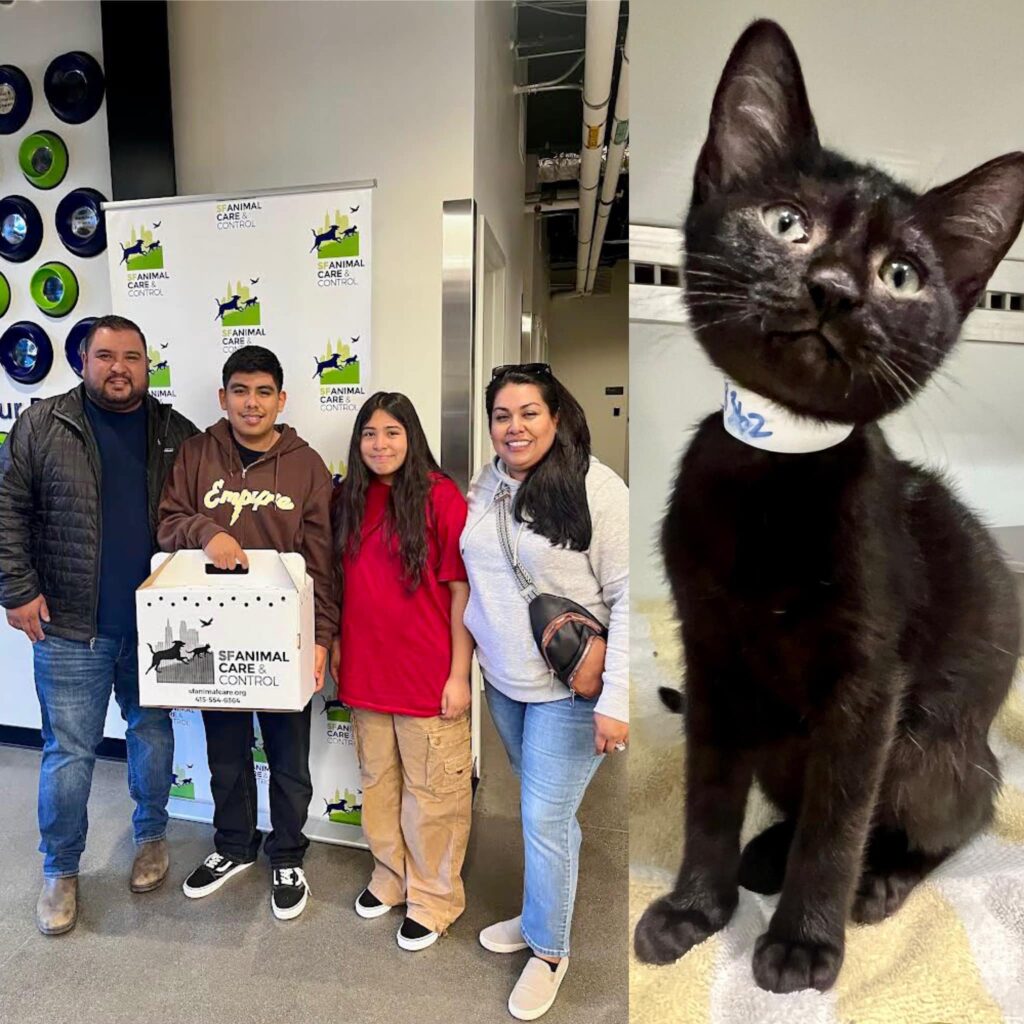
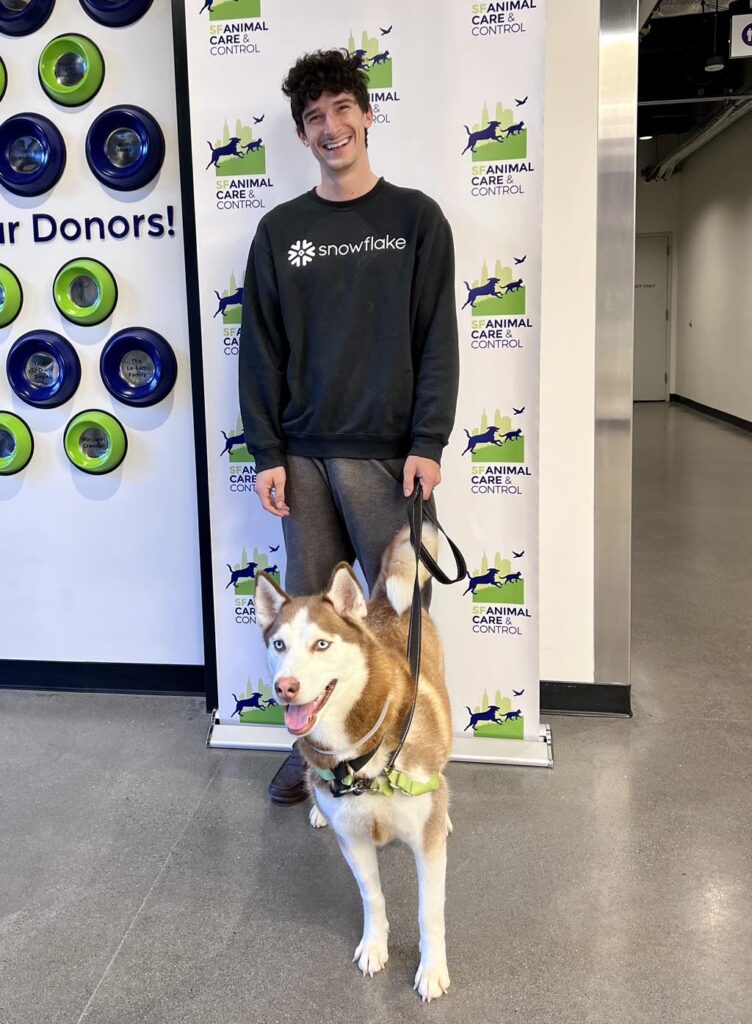
Sky
Thumper, now Nova.
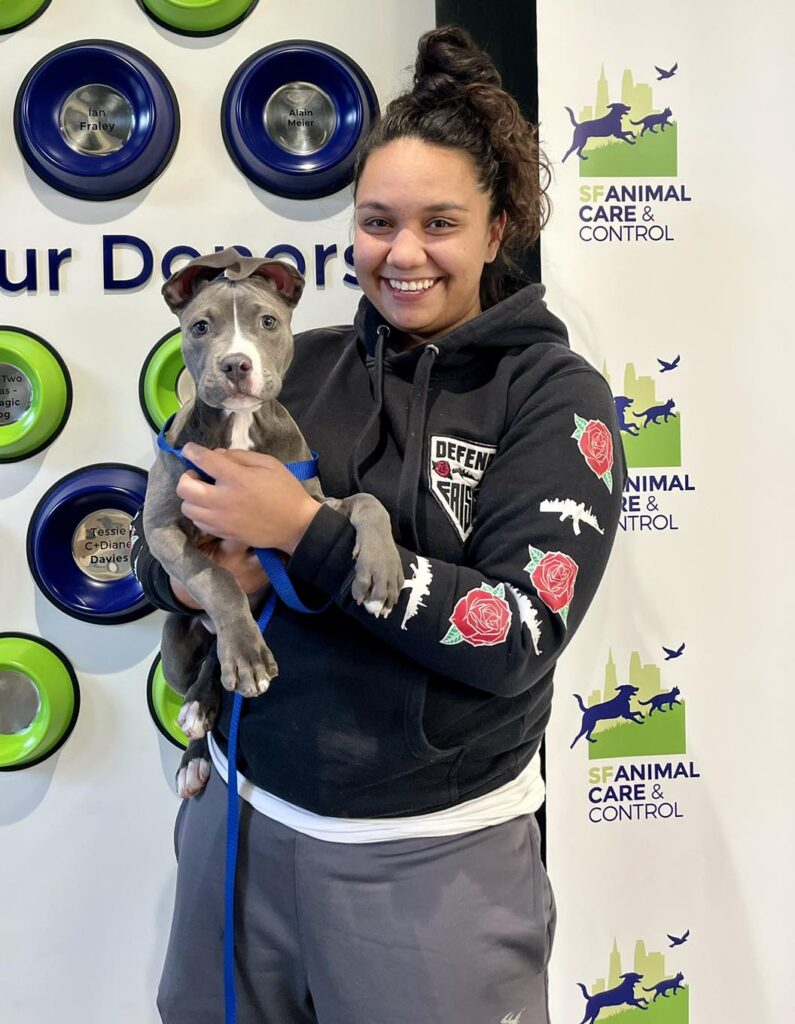
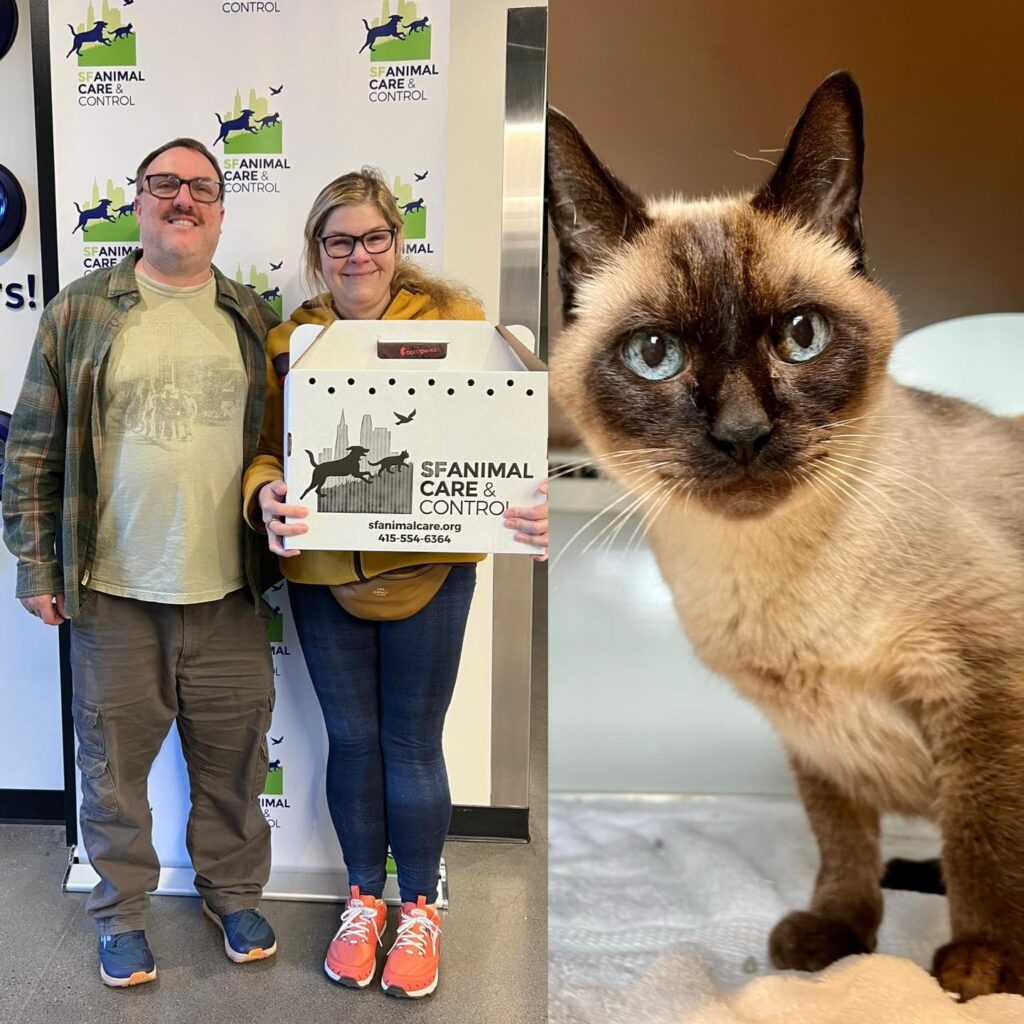
Vincent
October 20, 2023 – gecko stowaway
Officer Mullen reports…
We received a call in dispatch from a person who had just come back from vacation in Hawaii. They were unfolding their kid’s stroller when a tiny little stowaway leaped out. It was a tiny day gecko that caught a ride to San Francisco. The day gecko was contained in the bathroom until the officer arrived. The family had poked some holes in the lid of a tiny mason jar, and Officer Leiendecker went out to the call and carefully contained the tiny gecko in the mason jar for transport back to the shelter. On her way back from the call, she stopped at a pet store and got a container of flightless fruit flies for the gecko. She knew that he would be hungry after his long travels. She was right, she placed a few in the jar and watched him quickly gobble them up. Once back at the shelter, we were all asking the captain if we could take him back to Hawaii to return him to his habitat.
The day gecko is an introduced species to Hawaii and is native to northern Madagascar. They are not considered invasive in Hawaii since they tend to hang out in places without native plant and animal species and therefore do not compete with native species. Day geckos have adhesive scales on their toes that help them stick and climb smooth surfaces such as glass and walls. Geckos do not have eyelids but do have a clear scale that protects their eye and they use their tongue to clean and wet the eye. They are the only lizard to have a wide variety of calls and sounds. Their vocalizations range from squeaks and clicks to barks and croaks. Day geckos can sprint over 3 meters/second making them the fastest gecko in the world.
Since it was a bit out of our budget to send an ACO to Hawaii (or Madagascar), we looked for the next best placement for this tiny creature. Normally we would reach out to a reptile rescue that we work with, however this time Officer Leiendecker, an experienced reptile owner, stepped up to raise this tiny gecko. She already had an enclosure at home that was unoccupied and waiting for the next animal that needed a home. Now this tiny day gecko has a wonderful place to grow and thrive in a loving home that will care for his exotic needs.
Please remember to always check your bags when packing and unpacking from a trip, we have gotten calls about many different stowaways that find themselves in a completely different climate. Please call 415-554-9400 if you happen to bring home a little traveler from your vacations.
October 13, 2023 – raccoon predicament
Officer Mullen reports…
The other day Officers Sherwood and Quirke were called out to a Chinatown alley where passersby had contacted our dispatch to report a raccoon that had found himself in a troubling situation. He was spotted above a store among some wires and under a wooden sign that appeared unstable and ready to fall on the raccoon. Using a ladder the officers were able to climb up and carefully remove the sign. As the officer climbed the ladder the frightened raccoon was able to free himself and scurry up the building to a higher, more stable resting place. The officers saw that the raccoon was able to climb successfully he and thankfully appeared uninjured. He was left alone to find a better place to sleep the day away.
Raccoons are just one of the nearly 500 species of wildlife, including fish, birds, mammals, amphibians and invertebrates, that are supported by the San Francisco Bay. It is an essential resting and feeding ground for millions of birds. Help us care for all these amazing animals in our city. If you notice an animal that is sick, injured or just plain out-of-place, please contact our officers in dispatch at 415-554-9400. We will ask you a few questions and have you send a photo or video so we can best prioritize the response. Thank you for helping keep our diverse urban environment healthy.
